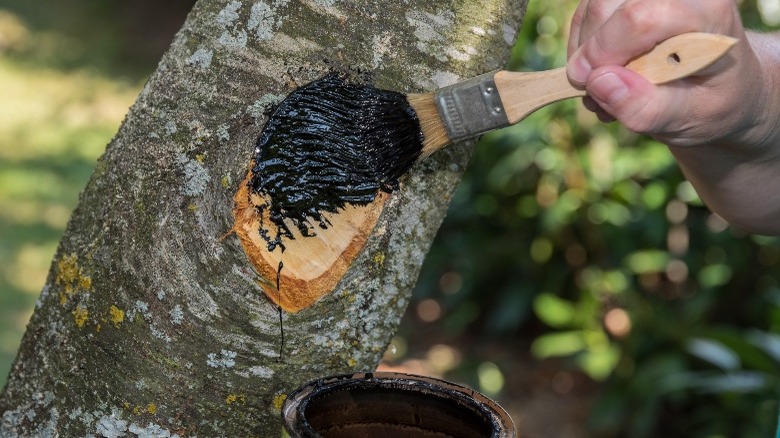What It Means If You See A Black Painted Tree
Imagine hiking a beautiful forest trail, traveling deeper into the woods while simultaneously wondering if you should turn back before the sunlight fades. That's when you see it — a tree in the middle of nowhere with a broad slash of black paint on the trunk. You don't need to imagine every horror movie involving the woods and hikers, as black paint on a tree has a completely innocent meaning. It is simply used to cover up another color of paint because someone made a mistake when marking a tree or the prior work has been canceled.
The U.S. Forest Service uses paint to designate the status of a tree to other team members or contractors. While there are many different colors used to mark trees, other organizations or even different areas may have conflicting meanings for each color. For example, blue paint could designate a tree is meant to be cut down or it could indicate a property boundary. An orange marker might mean that tree should be harvested or it should be left alone. However, you can likely always dismiss a solid black coat of paint as covering up an error or a change of plans for that tree.
Why else would trees be painted black?
If you live close to hiking trails, you might come across trees marked with black paint being used as trail blazers. These marks can be any color and are used as trail markers. One blaze means to keep going straight, a double blaze indicates a turn, and a triple blaze tells hikers a trailhead or intersection is ahead. Other trails may be marked with arrows to indicate which direction to go. These sometimes have black paint paired with another color like white or red to make it more visible.
Occasionally, you'll find black paint on the pruned part of a tree. In this case, it has nothing to do with the Forest Service. Instead, someone has used what is called pruning sealer on a tree as a misguided attempt to help the tree recover from pruning. You should not paint a pruned tree, as most sealers contain harmful ingredients like petroleum or asphalt, which do more harm than good in most cases. Trees heal themselves from pruning far better than an artificial product can. If you are tempted to use a pruning sealer, consult a certified arborist for a natural alternative, if a sealer is needed at all. Elm and oak trees are the rare exceptions, and an arborist can guide you in the proper care of an injured elm or oak.

